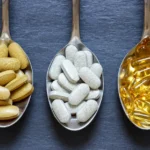When facing the daunting challenge of Alcoholic Fatty Liver Disease (AFLD), resilience emerges as our greatest asset. The battle against this stealthy adversary requires a comprehensive strategy, starting with the reduction or cessation of alcohol intake. But the path to victory doesn’t end there. It extends into the realm of lifestyle adjustments, where we forge a path to rejuvenation and restoration.
- Moderating Alcohol Consumption: The first step in taming the tempest of AFLD is to curb excessive drinking habits. By reducing alcohol intake or abstaining altogether, we can halt the progression of liver damage and pave the way for healing.
- Embracing Lifestyle Modifications: From the crucible of lifestyle modifications emerges a blueprint for renewal. Nourishing our bodies with wholesome nutrition becomes paramount, as we fuel ourselves with the building blocks of health. Incorporating a balanced diet rich in fruits, vegetables, lean proteins, and whole grains empowers us to combat inflammation and promote liver health.
- Harnessing the Power of Physical Activity: Fortifying our bodies with the strength of physical activity becomes a cornerstone of our defense against AFLD. Engaging in regular exercise not only helps us shed excess weight but also improves insulin sensitivity and reduces liver fat accumulation. Whether it’s brisk walking, jogging, swimming, or yoga, finding joy in movement becomes our ally in the quest for wellness.
- Mindful Weight Management: Shedding excess burdens through mindful weight management becomes an essential aspect of our journey. By maintaining a healthy weight, we alleviate strain on the liver and reduce the risk of disease progression. Adopting sustainable habits such as portion control, mindful eating, and regular monitoring of progress empowers us to achieve our goals and thrive.
- Seeking Support and Guidance: In the quest for sobriety and serenity, we don’t walk alone. Medications, support groups, and counseling stand as allies, providing invaluable assistance along the way. Whether it’s pharmacological interventions to manage symptoms or the camaraderie of fellow travelers in support groups, reaching out for help becomes a sign of strength, not weakness.
As we navigate the storm ofc, let us arm ourselves with resilience, determination, and the knowledge that victory is within reach. By embracing multifaceted strategies for triumph, we can overcome adversity and reclaim our health and well-being.
Diagnostic Methods for AFLD:
Here’s a table summarizing the diagnostic methods for AFLD:
| Diagnostic Method |
Description |
| Medical History |
A thorough evaluation of the patient’s medical background, including their history of alcohol consumption, symptoms experienced, and potential risk factors. |
| Physical Examination |
Examination of the abdomen for signs of liver enlargement (hepatomegaly) and tenderness, which may indicate liver inflammation or damage. |
| Blood Tests |
Measurement of liver enzymes (ALT, AST) and other markers of liver function and inflammation to assess liver health and the presence of AFLD. |
| Imaging Studies |
Visualization of the liver using ultrasound, CT scan, or MRI to evaluate fat accumulation, liver structure, and identify signs of AFLD. |
| Liver Biopsy |
An invasive procedure involving the extraction of a small tissue sample from the liver to confirm the diagnosis of AFLD and assess the severity of liver injury. |
This table provides a concise overview of the various diagnostic methods used to evaluate and diagnose AFLD, including their purposes and descriptions.
Strategies for AFLD Prevention:
- Education and Awareness: Tackling AFLD begins with educating individuals about the risks associated with excessive alcohol consumption. Awareness campaigns must disseminate information about the detrimental effects of alcohol on liver health, empowering individuals to make informed decisions. By enhancing knowledge, people can understand the importance of responsible drinking and the impact it has on preventing AFLD.
- Community Engagement: Communities play a vital role in preventing AFLD by fostering a supportive environment that encourages healthy behaviors. Community-based programs can provide resources and support for individuals struggling with alcohol addiction. By addressing social determinants of health and promoting access to healthcare services, communities can mitigate risk factors associated with AFLD and promote overall well-being.
- Regulatory Measures: Governments and policymakers have a responsibility to implement regulations and policies aimed at reducing alcohol consumption and preventing AFLD. This may include enforcing age restrictions on alcohol sales, implementing alcohol taxation policies, and restricting alcohol advertising and marketing aimed at vulnerable populations. Regulatory measures are essential in creating environments that discourage excessive alcohol consumption and promote public health.
- Early Intervention Programs: Early intervention is crucial in preventing AFLD from progressing to more severe stages. Healthcare providers should offer screening and counseling services to individuals at risk of developing AFLD, particularly those with a history of heavy alcohol consumption. By identifying and addressing alcohol use disorders early on, healthcare professionals can prevent the onset of AFLD and improve outcomes for affected individuals.
- Promotion of Healthy Lifestyles: Encouraging healthy lifestyles, including regular exercise and balanced nutrition, is essential in preventing AFLD. Physical activity helps maintain a healthy weight and reduces the risk of obesity-related liver diseases. A diet rich in fruits, vegetables, and whole grains provides essential nutrients that support liver function and minimize the risk of AFLD. By promoting healthy behaviors, individuals can protect their liver health and reduce the likelihood of developing AFLD.
Overall, a comprehensive approach that encompasses education, community engagement, regulatory measures, early intervention, and the promotion of healthy lifestyles is essential in curbing the curse of AFLD. By addressing the root causes and risk factors associated with excessive alcohol consumption, society can work towards preventing AFLD and improving overall liver health.
Conclusion:
In the crucible of AFLD, the battle for liver health rages on. From the depths of despair to the pinnacle of hope, the journey towards intervention is fraught with challenges and triumphs. Through enlightenment, empowerment, and collective action, we stand poised on the precipice of transformation. Let us heed the call to arms, unite in purpose, and forge a future free from the shackles of AFLD’s tyranny.
References:


